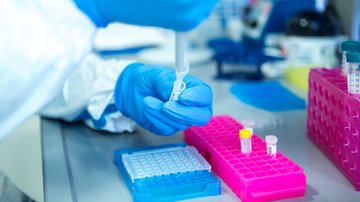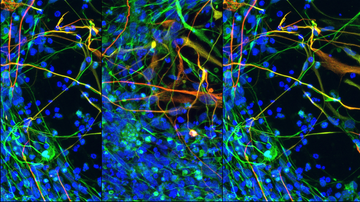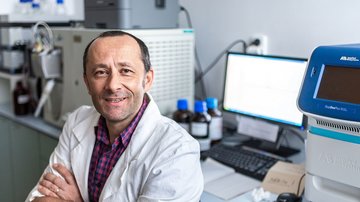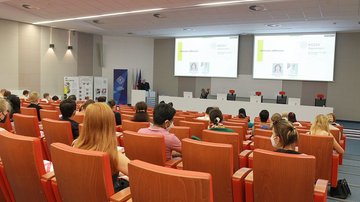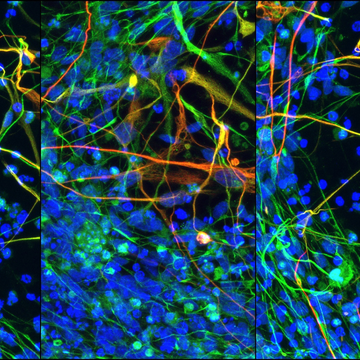
Application of Stem Cells and Biomaterials in Cell Therapy
Scientists are looking for new ways to regenerate nerve tissue using microRNA molecules
Brain and spinal cord injuries are currently a cause for serious concern not only due to the increasing frequency of new cases, but mainly because of their severity and significant socio-economic impact on society. Both types of injury are very serious acute conditions with a high mortality rate that require immediate medical intervention and, in some cases, long-term follow-up care. The most common central nervous system injuries include stroke, intracranial trauma, and spinal cord injury.
A cerebrovascular accident, popularly known as a stroke, is a sudden disruption of blood circulation in the brain that leads to irreversible damage to brain tissue. Globally, it is the second leading cause of death in the world. Approximately 25,000 new cases occur in the Czech Republic every year. Intracranial trauma, or traumatic brain injury, is an injury caused by physical trauma (e.g. blow, accident, motor accident, etc.) whereby different parts of the brain are damaged depending on the location of the injury. Spinal cord lesions are the other type of injury and result from devastating damage to some part of the spinal cord. An injury of this kind causes interruption in the conduction of impulses through the spinal cord, which affects not only the mobility of the limbs but also the activity of many body systems and leads to serious and permanent health consequences.
Despite tremendous advances in science and medicine, the methods of diagnosing and treating brain and spinal cord injuries remain severely limited. Although nowadays it is not entirely the case that "nerve cells do not regenerate", restoring the function of the damaged nervous system is still a distant goal, towards which many scientific teams around the world are working. Teams of scientists from the Department of Neuroregeneration of the Institute of Experimental Medicine of the Academy of Sciences of the Czech Republic and the Institute of Biotechnology of the Academy of Sciences of the Czech Republic in BIOCEV are also among these teams; they collaborated in the search for new possibilities for the diagnosis and treatment of these serious conditions. As part of the project entitled "MicroRNAs in Nervous System Injury: Potential Role and Therapeutic Significance", both teams set themselves the difficult goal of revealing changes in neural tissue at the level of gene expression after brain and spinal cord injury, with a particular emphasis on spinal cord injury. Scientists from the Wroclaw University of Environmental and Life Sciences in Poland also participated in the study.
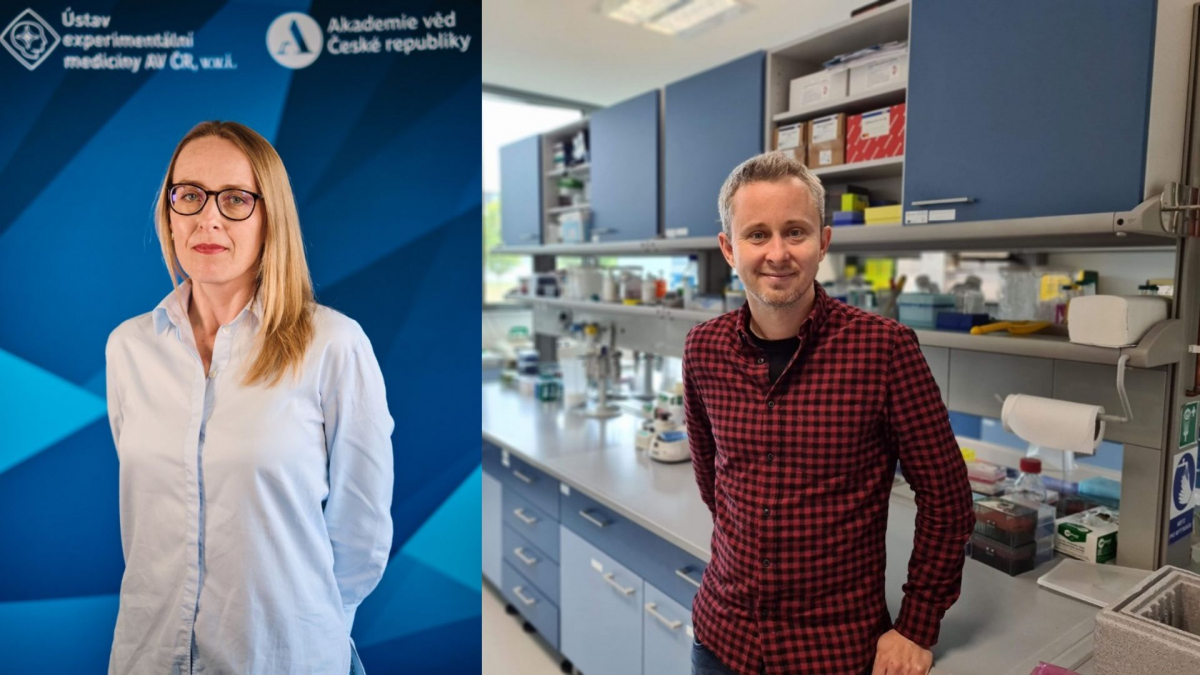
The basis of the collaboration was the sequencing analysis of mRNA and microRNA molecules in an experimental model of spinal cord injury, resulting in scientists obtaining comprehensive information about changes in the expression of mRNA molecules controlling key processes affecting spinal cord injury, as well as their regulatory elements of microRNA molecules. "We found very dramatic changes in gene expression, which we characterized according to biological functions and current findings. At the same time, these alterations were accompanied by significant changes in the composition of cell types, which fundamentally affects the cellular structure of the lesioned tissue. The subsequent combination of this information with a detailed description of the changes in microRNA regulatory molecules allowed us to identify key molecules that have a central role in the ongoing pathophysiological processes, the role of some of which has already been described, but some are completely new and potentially therapeutically interesting", explains the main researcher of the project Nataliya Romanyuk, Ph.D. (IEM AS CR) in BIOCEV. Verification of the significance of these new target molecules is the subject of ongoing experiments and will also form the basis of other projects.

The use of microRNA molecules for the targeted manipulation of pathophysiological conditions has been very topical in recent years, and is attracting more and more attention of scientists from various fields. The other promising use of these molecules is their diagnostic potential. "Because miRNA molecules are relatively small compared to other nucleic acids, they are easily secreted into the intercellular space and body fluids, where they can be detected and serve as biomarkers showing the severity of an injury or indicating its adverse consequences. At the same time, in current practice, the diagnosis of the severity of the injury is largely based on reflex assessment, which is quite difficult in patients who are unconscious or under the influence of drugs", explains Lukáš Valihrach, Ph.D. from the collaborating Laboratory of Gene Expression IBT AS CR in BIOCEV. The use of microRNA molecules for the diagnosis of spinal cord injury is the goal of another project by teams from the IEM of the Academy of Sciences of the Czech Republic and IBT of the Academy of Sciences of the Czech Republic, with the strong support of doc. MD Aleše Hejčl, Ph.D., who coordinates doctors from eleven Czech hospitals collaborating on this project.
Despite the fact that both the aforementioned studies are of limited scope, their authors believe that they will bring important insights into the role of microRNAs in the repair and regeneration of damaged nerve tissue. Elucidation of changes in the cellular functions triggered by microRNAs under physiological and pathological conditions may open a completely new perspective on the diagnosis and prognosis of central nervous system injury, and contribute to its more efficient treatment in the near future. Projects of a similar nature with the support of the Grant Agency of the Czech Republic will certainly contribute to this goal.

